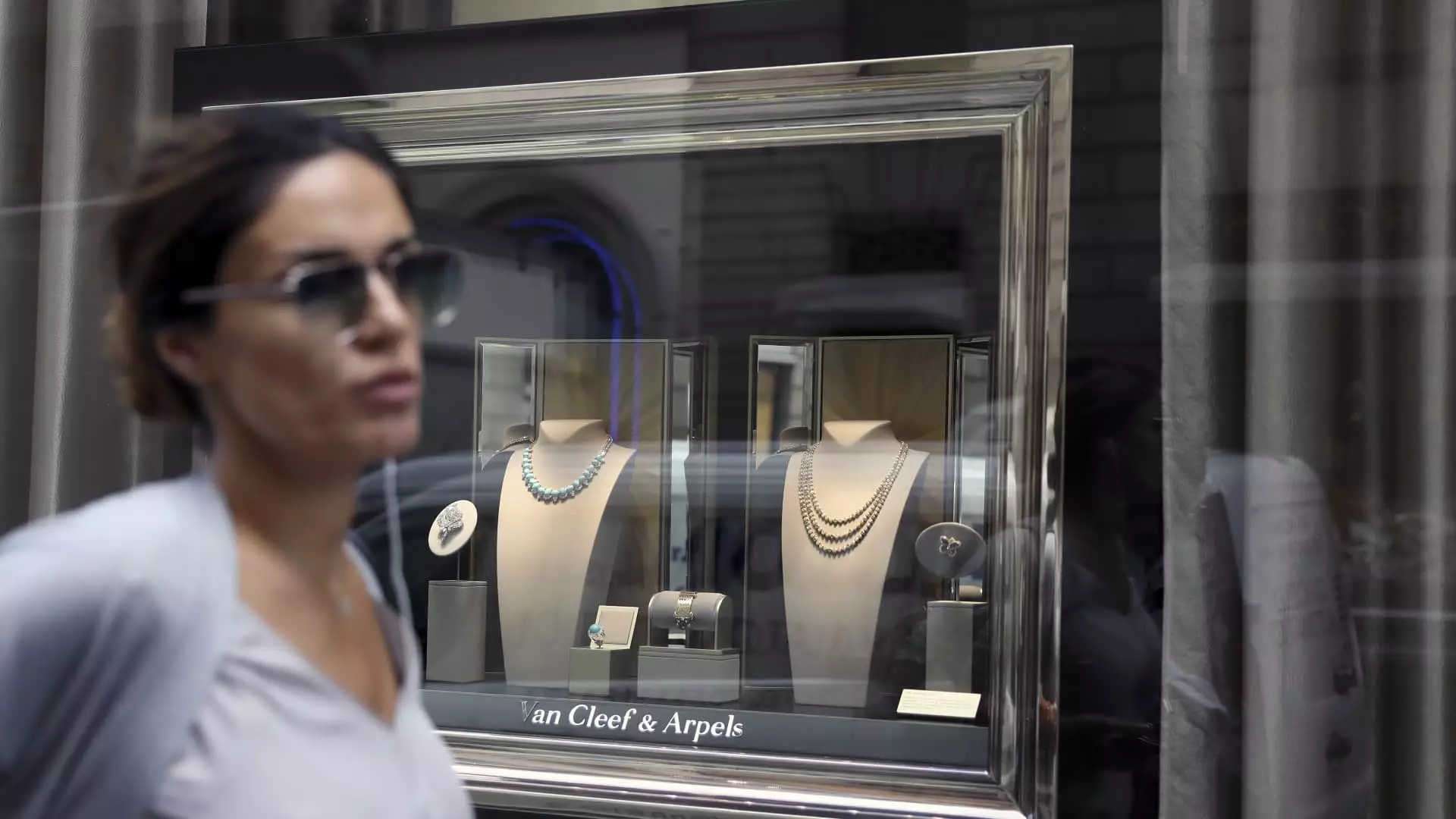As the shimmering lights of lavish jewelry continue to dazzle the global stage, a stark contrast looms for those navigating the luxury market. The super-rich, unyielding in their quest for the extraordinary, are certainly distinguishing themselves from a broader consumer demographic that appears to be tightening their fiscal belts. In a world where diamonds sparkle merely as status symbols, it is essential to delve deeper beyond the brilliance to understand the complex layers defining today’s luxury jewelry landscape.
The recent surge in sales for luxury brands like Richemont, housing apex names such as Cartier and Van Cleef & Arpels, reflects a glaring reality: only the elite can afford the finest in an aspirational market now dictated by steep hierarchies of desirability. This contrasting existence raises significant questions—are we witnessing the rise of a wholly divided marketplace, where wealth begets an insatiable hunger for excess, leaving the average consumer in a distant realm of compromised aspirations?
The Resilience of Richemont
Richemont has proven resilient amidst these dynamics, showcasing robust growth in its jewelry segment, driven by an 11% increase in fiscal fourth-quarter sales. This is particularly striking against a backdrop where heavyweights like LVMH reported stagnation in their traditional stronghold of watches and jewelry. Luca Solca’s assertion that Richemont has become the darling of consumer desire isn’t merely optimistic chatter; it highlights a crucial understanding that luxury is increasingly becoming a cherished oasis for the super wealthy, even as challengers struggle in the face of economic turbulence.
However, the discomforting reality lies beneath the dazzling surface. While Richemont stands tall, buoyed by its illustrious portfolio, the shadow of broader economic headwinds—soaring gold prices and tariffs—casts uncertainty on its longevity. The shift in consumer behavior, where jewelry purchases remain buoyant while demand for watches softens, paints a fragile picture. Richemont may be reaping benefits now, but there is a risk of becoming overly reliant on the jewelry division, leaving them exposed if the winds of fortune ever change.
The Watch Conundrum: A Market in Retreat
Contrasted with jewelry’s ascendance, the watch market tells a different story. Richemont’s specialist watchmakers saw a sharp decline, particularly in China, as mass consumption yielded to a more discerning buyer. The comment from Solca, “Everybody and their dog has bought a watch out of Covid-19,” unwittingly encapsulates the current situation—everyone cashed in on opportunistic purchases during lockdowns, flooding the market. This ‘watch frenzy’ has inevitably led to saturation, creating an environment where demand struggles to keep pace with supply.
As popular models from brands like Patek Philippe and Rolex remain cloaked in secrecy due to their privately owned status, analysts are left to sift through foggy performance data, leading to inconsistent narrative structures about the industry. One thing remains clear: the luxury watch market’s identity as a long-term investment is no accident—such purchases are rarely impulsive. This inherent characteristic could stymie any attempts at a quick recovery, leaving investors questioning the market’s traction.
The Price of Prestige: An Economic Balancing Act
Richemont’s commitment to avoiding unsustainable price hikes contrasts sharply with audible whispers of rising prices from competitors. This decision places the brand in an enviable position but reveals turbulence lurking beneath the surface. The luxury consumer, once unquestioningly loyal, is increasingly becoming savvier, paralleled by their sense of entitlement to value that matches their expenditure. A balance must be struck; the desire for prestige and the reality of economic burden must harmonize.
This is a critical juncture, one that could dictate the ongoing reputational trajectory of luxury brands. Investors like Russ Mould are right to voice caution, noting the potential pitfalls that threaten market share. As the luxury sector is drawn into a relentless tug-of-war between aesthetics and economics, the sentiment around luxury investment may falter if brands fail to align value with perceived worth.
Erosion of the Luxe Middle Ground
Ultimately, a luxury market defined by unprecedented wealth disparities may yield an unsettling conclusion; the very foundations of luxury, long grounded in craftsmanship and timelessness, could devolve into transient gimmicks. If the market continues to pivot towards the elite, the compelling artistry that has defined high-end jewelry could be compromised, leaving an economy replete with hollow opulence.
As we diagnose the current landscape of luxury consumption, one must ponder; is the shiny exterior worth the boiling turmoil surging beneath? Amidst a scatter of sparkles, genuine connections to craftsmanship and artistry are at risk of being overwhelmed by a quest for sheer accumulation. The real challenge facing luxury brands today is not merely to seduce the super rich but to ensure they retain a sincere, authentic narrative that transcends mere bling, fostering a deeper appreciation for the artistry behind every piece.

